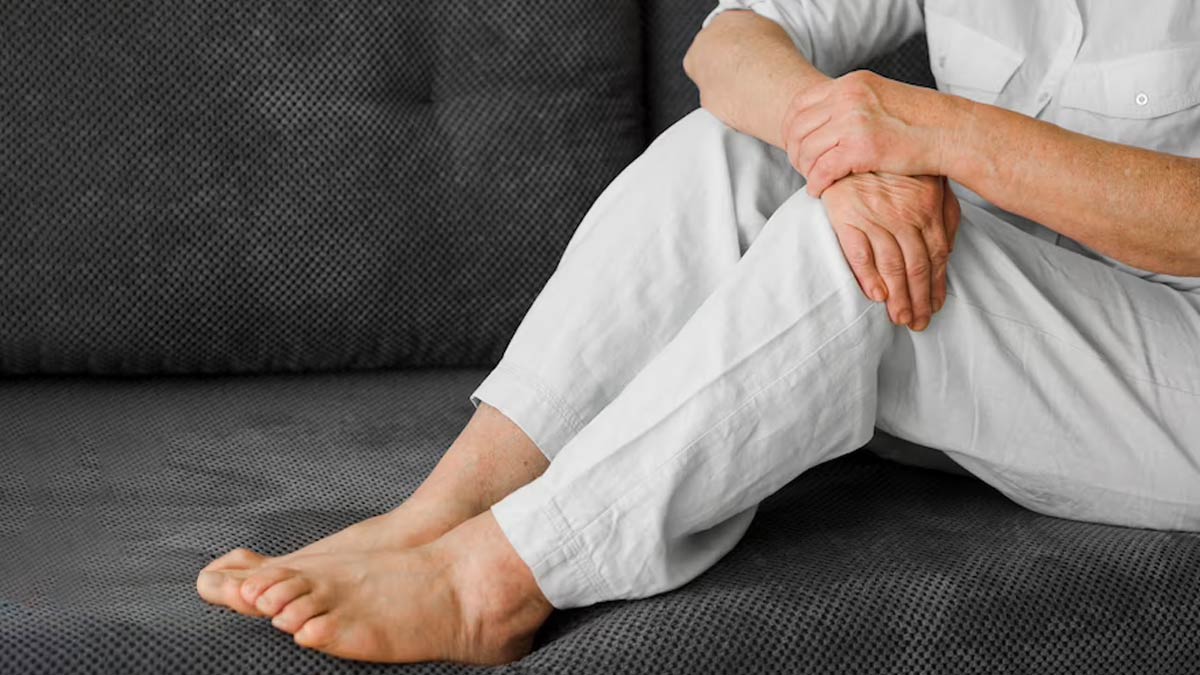
Periodic limb movement disorder (PLMD) is a sleep disorder characterised by repeated episodes of limb movements during sleep, which can cause disturbance and lead to excessive daytime sleepiness and fatigue.
Table of Content:-
Speaking to OnlyMyHealth, Dr. Sumeet Nigam of Sahara Hospital in Lucknow said that this sleep disorder is time-specific as it occurs regularly for a long period of. This limb movement issue only lasts about 15-20 seconds at most during the night. Periodic limb movement disorder happens during the night and produces jerky movement, flexing, or twitching in your legs and arms.
Causes Of PLMD
According to Dr. Nigam, aside from what research indicates, there are other circumstances that can lead to this disorder. So far the exact reason behind the occurrence of PLMD is unknown, but experts say that as it arises from the central nervous system, it could be associated with nerve response and dysfunctions. Some conditions that can lead to PLMD disorder are caffeine consumption, antidepressants, nausea relievers, and other medications. Other types of sleep disorders like restless legs syndrome and narcolepsy can lead to periodic limb disorder.

Attention deficit hyperactivity disorder, often known as Williams syndrome, injury to the spinal cord and anaemia due to iron deficiency can cause PLMD.
Also read: 6 Things To Know About Congenital Limb Deformities
Symptoms Of PLMD
The first crucial thing to understand about this condition is that there are no distinct symptoms. Symptoms appear for around 20 seconds before movement and occur approximately every 30 minutes. Leg movement frequently happens during non-rapid eye movement. The following are the symptoms of periodic limb movement disorder:
- Involuntary muscle twitching and jerking of the legs and feet during sleep.
- The limbs may move rhythmically, and the movements may be painful.
- The episodes can last from a few seconds to several minutes and can occur multiple times during the night.
- The episodes can disrupt sleep, leading to daytime fatigue, irritability, and difficulty concentrating.
- The episodes may also be accompanied by an arousal from sleep, leading to an inability to fall back asleep.
As per Dr Sumeet, rest leg syndrome and periodic limb disorder are distinct illnesses with different symptoms. The main distinction is that PLMD is a limb condition, which means that all limbs, including the hands, hips, legs, and feet, are affected. Restless legs syndrome affects mainly the legs, which is less troublesome.

Treatment
Treatment for PLMD usually involves lifestyle changes, such as getting enough sleep and avoiding alcohol and caffeine. Medications, such as muscle relaxants and antidepressants, may also be prescribed to help reduce the symptoms. In severe cases, surgery may be recommended.
If you think you may have PLMD, it is important to talk to your doctor. They can diagnose PLMD and help you find the best treatment plan for you.
Also watch this video
How we keep this article up to date:
We work with experts and keep a close eye on the latest in health and wellness. Whenever there is a new research or helpful information, we update our articles with accurate and useful advice.
Current Version
